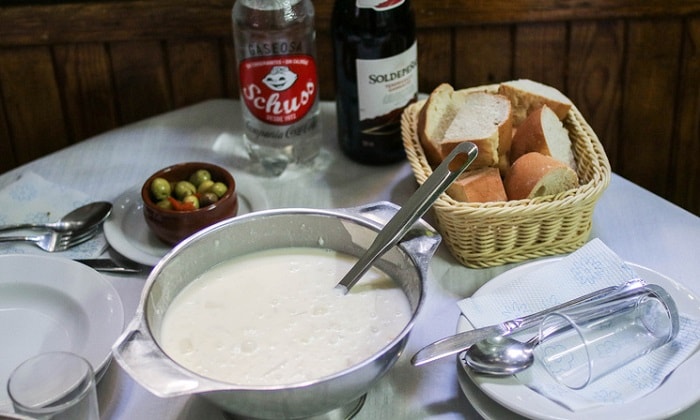Olive is one of the healthiest oils to cook with. When made artisanally, it’s also one of the tastiest ingredients in the world! In fact, don’t be surprised to find olive oil in every kitchen around the Mediterranean basin, and the sunny Andalucía in Southwest Spain is no exception.
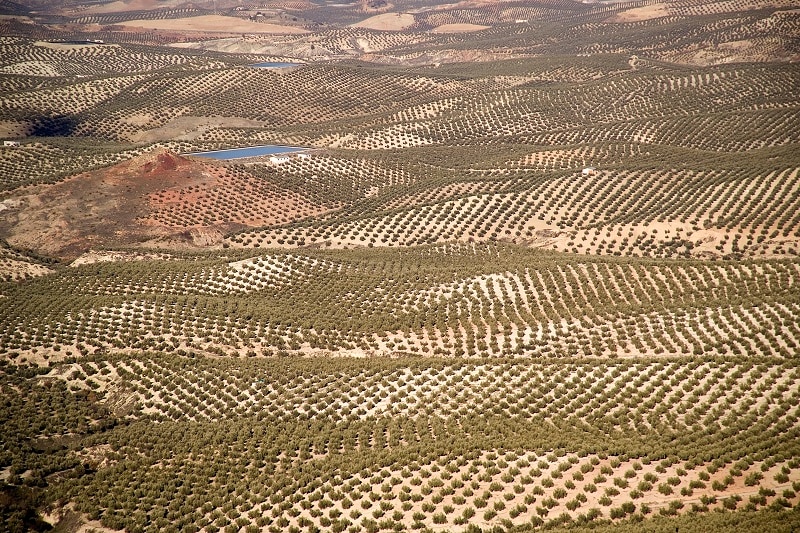
The History of Olive Oil
Olive oil is as old as humanity. Despite being one of the trendiest superfoods in the 21st century, talking about olive oil is talking about an ingredient with thousands of years of history.
It all started around the Mediterranean Basin, the area with the right climatic conditions for olive trees to thrive. The Ancient Greeks believed olive trees were a gift from the gods, and they could just have been right — it’s easy to see why they spread the verdant tree far and wide throughout the known world. Olive oil was a staple in every ancient civilisation, from Egypt to Greece and from Asia Minor to Spain. Olive oil production goes back for at least 8,000 years, and it has changed little in all this time!
Olive trees soon found a place in the New World as well, in regions with a Mediterranean climate, from California to Argentina. Of course, Europe is still the leading source of fine oil.
Types of Olive Oil
Not all olive oil is created equal. There are different oil quality levels and knowing more about them is the first step to adding olive oil to your diet.
Refined Olive Oil. Olive oil that’s been refined until tasteless and odourless. The refining process also removes most of the healthy fatty acids in the oil. This type of oil can be used to cook, but it’s not widely recommended.
Virgin Olive Oil. Purer than refined oil, extracted by mechanical means with no chemicals. This type of olive oil has low levels of fatty acids and might have sensory defects.
Extra Virgin Olive Oil. This is the finest type of olive oil. It’s cold pressed with no chemical additives. EVOO preserves its colour, flavour and aroma, and although it’s extraordinary cooking oil, you can also drizzle it over all types of food for its addictive taste.
According to several studies, the beneficial effects of olive oil may relate to the oil’s polyphenol conten, that in turn, depends on the technological process of the oil extraction.
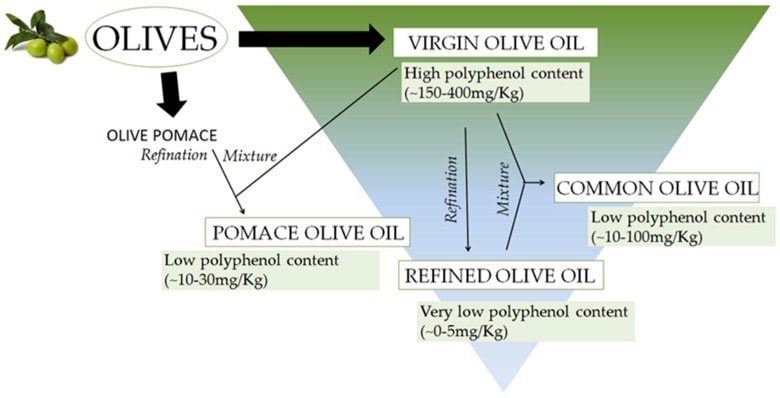
Source: https://www.ncbi.nlm.nih.gov

Is Olive Oil Good For You?
- Olive oil has been praised for its health benefits for ages, and today, modern medicine backs these health claims, making the delicious oil an authentic superfood.
- Olive oil has high amounts of healthy monounsaturated fats or oleic acid, which might lower inflammation and even help prevent some types of cancer.
- Olive oil has antioxidants that can reduce the risk of chronic diseases, hypertension and premature ageing.
- Olive oil can help lower blood pressure and low-density “bad” cholesterol levels, especially when substituting saturated fats, including butter.
- Olive oil is not associated with weight gain despite being a type of fat. In fact, it might help you reach your weight goal if consumed in moderation and as part of a balanced Mediterranean diet, which includes plenty of fruits, vegetables, and nuts; whole grains; and limited amounts of red meat.
How to Cook with Olive Oil?
It has been suggested that using olive oil to fry food may be bad for your health due to the production aldehydes during the heating process.
However many studies have already proven that frying with olive oil is probably the helathiest way to do it. Check this artcile on medicalnewstoday.com or this study conducted by the Leicester School of Pharmacy and the BBC.
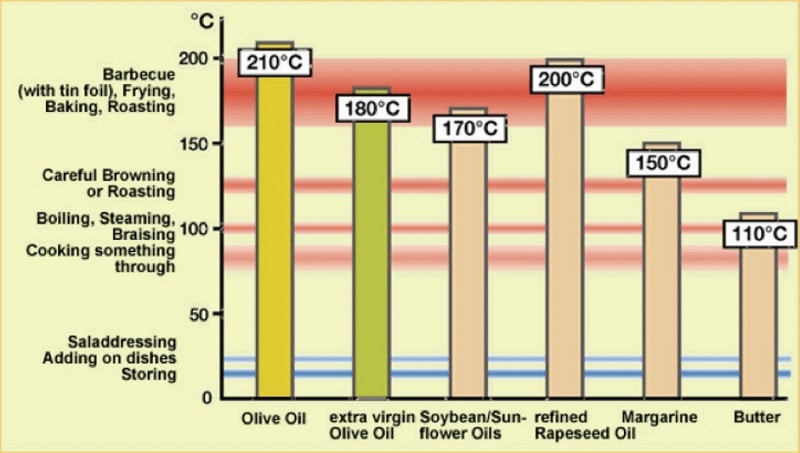
Olive oil has a high smoke point (the temperature at which it burns) of around 210°C which is substantially higher than the ideal temperature for frying food (180ºC), and it’s stable through the cooking process. fats with lower critical points, such as corn and butter, break down at this temperature and form toxic products.
This makes olive oil, particularly Extra Virgin Olive Oil, ideal for cooking. Stir-fry, sauté, or add olive oil to baking treats. The sky’s the limit when the oil is of high quality.
To enjoy olive oil’s flavours and texture to their fullest, drizzle it over your food before serving, and we don’t just mean salads, but any savoury dish! Olive oil can add layers of complexity to any meal imaginable.
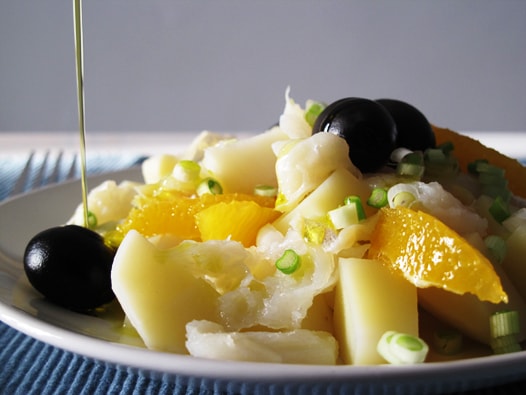
Where Does Olive Oil Come From?
Although dozens of countries produce significant amounts of olive oil, Spain is responsible for 70% of Europe’s production and 45% of the world’s supply, followed by Italy, Greece, Syria, Tunisia and Turkey. Only the province of Jaén in Andalucía produces more olive oil than Italy!
In context, Spain produced an average of nearly 1,360,000 tons of olive oil in past years while Italy produced only 597,700 tons. Spain produces as much olive oil as the following nine countries combined.
Spain ranks number one in quality as well, as many of the olives harvested are destined to become virgin and extra virgin olive oil. Spain has over 350,000 olive growers, tending 2.75 million hectares of olive groves!
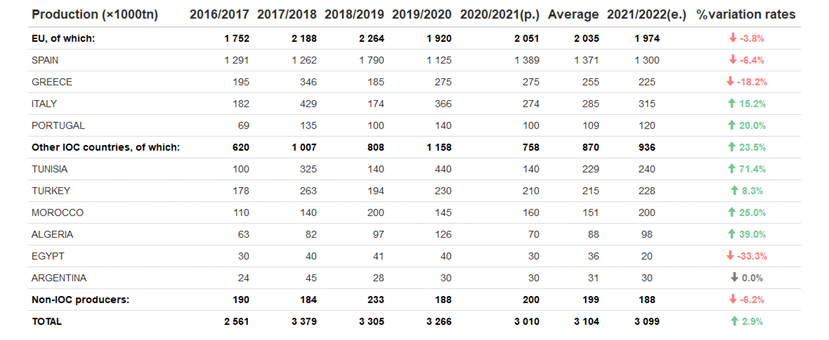
It’s All About the Olives
Although there are hundreds of olive varieties, not all of them are meant to become olive oil. In fact, just a handful of olives are responsible for most of Spain’s premium oil. These are the most popular olives in Spain by volume.
Picual. Picual olives are the most planted varietal in Spain, and are mainly used to make olive oil at all quality levels.
Gordal . Gordal olives are the second-most planted varietal in Spain. Growers harvest the large gordal olives while green, and although these olives are meaty and flavourful, they’re rarely used to make oil.
Hojiblanca. The third-most planted varietal in Spain feels right at home around Córdoba. These black olives can be consumed as-is, but they also make high-quality oil.
Manzanilla . This noble dual-purpose varietal can be consumed as food, but it also produces spectacular olive oil. Oil made with manzanilla olives is mild and balanced, and it’s pretty resistant to oxidation.
Arbequina. It is a very small olive with a sweet taste rather than the typical bitter aftertaset that most olive oils have. The olive oil made from this olive is a great options for those who don’t like a strong olive oil flavor.
Aloreña. The most genuine of the olives in Spain. It is the only table olive in Spain with a Designation of Origin. It is such a delicate local variety that it is harvested by hand and all of its preparation is 100% natural.
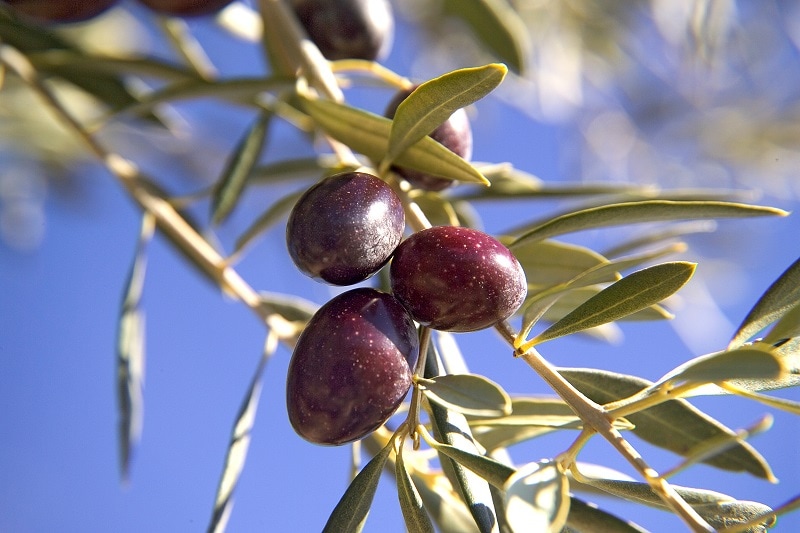
Taste for Yourself!
Olive oil is a special ingredient that will bring a smile to your face from breakfast to dinner. And although the world of olive oil is vast and diverse, you can always rely on high-quality Spanish producers to find the right one. This is the genuine liquid gold — one that’s best enjoyed straight out of the press!
If you’re ever in Spain, don’t miss the opportunity of losing yourself in the endless olive groves of Andalucía. Can you hear the rattling guitars already?

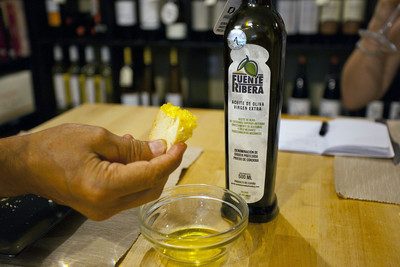
Where can I find a good Spanish Extra Virgin Olive Oil?
For those who are not in Spain, the company from Jaen Campos de Saana offers many excelent olive oils worldwide through its online shop in amazon
The famous company “La Española” sells its clod-press extra virgin olive oil through amazon as well.
The olive oil Zoe from Toledo in the middle part of Spain, has this beautiful can on offer:
Finca La Torre from Malaga are ecological and sustainable producers who offers different award-winning Extra Virgin olive oils from olive trees with more than 2,000 years. Especially good is the one made from the Hojiblanca olive that only grows in this region.
Don’t forget to share this post!
Related Articles
↓
Sign up for our Newsletter and get the inside scoop on our favorite recipes,
exploring and devouring Spain and more.




